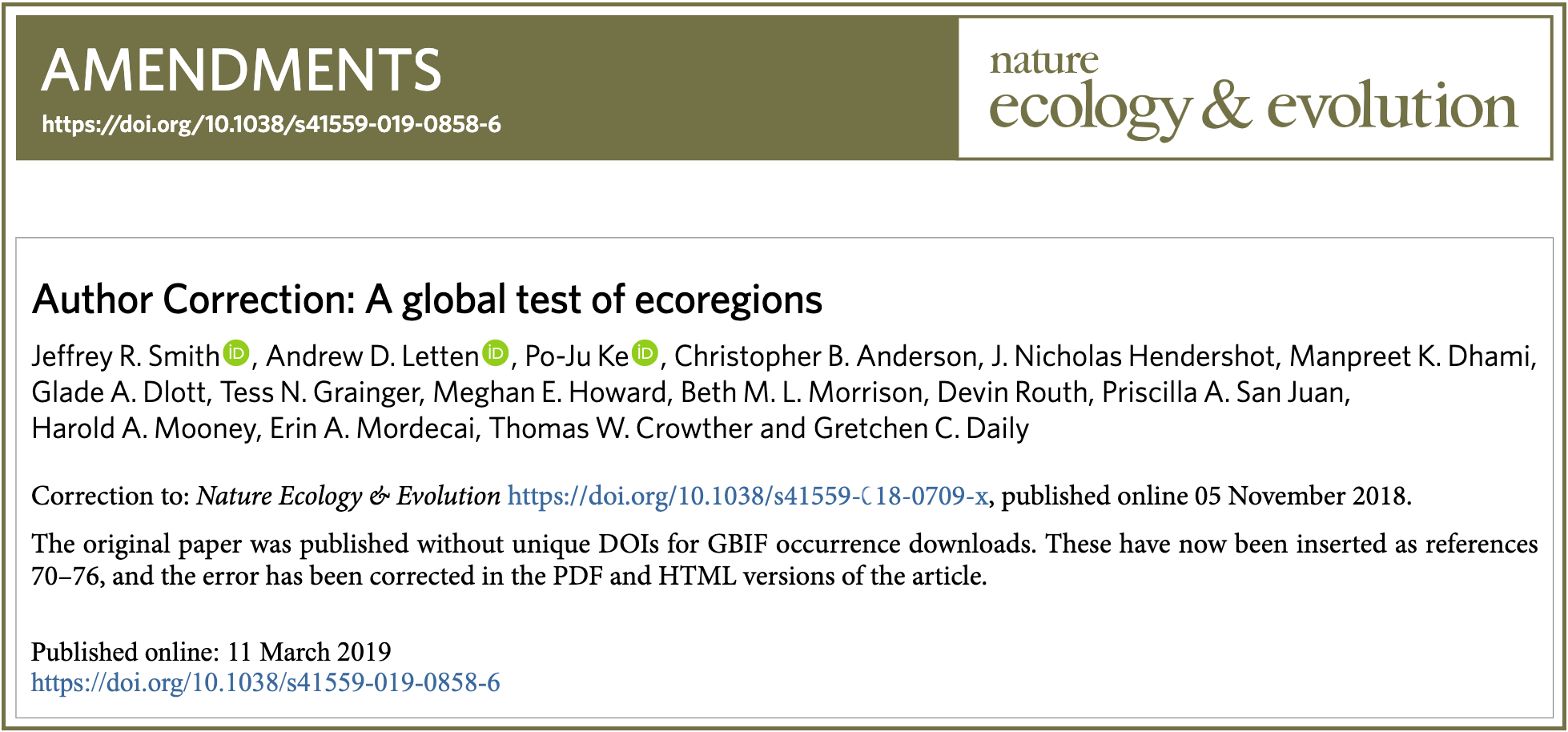This feature is also published in the GBIF Science Review 2019, which highlights important and noteworthy examples of the use and reuse of GBIF-mediated data in research and policy.
The idea that well-defined physiographical regions both shape and define distinct groupings of species has formed a central tenet of biological sciences since Alexander von Humboldt and Alfred Russel Wallace first offered their own closely observed insights on the distribution patterns of plants and animals.
Given our current ecological and evolutionary processes, these ‘natural’ boundaries seem like an intuitively accurate way of describing patterns of biological communities. But even as biogeographic research has evolved into an increasingly computational discipline, Humboldt and Wallace’s scientific heirs haven’t challenged such concepts, tending instead to accept the validity of ecoregions on faith—or, at most, organizing new efforts by experts to refine and adjust proposed boundaries and classifications.
Stanford PhD candidate Jeffrey Smith represents the next generation of biogeographers. Armed with emerging statistical tools and libraries, massive computing power and big data in the form of 200 million occurrence records from the GBIF network, he and his co-authors sought to use species-level evidence to weigh the validity of the ecoregion concept by asking the question:
Do ecoregion borders represent meaningful delineations between distinct biotic communities?
Despite Smith’s self-effacing description of the paper’s origins as “the result of serendipity, sarcastic comments, snacks, beer, and friends”, this data-driven test was no idle pastime. Species protection, conservation planning, habitat restoration and other applied natural-resource disciplines all depend to a large extent on the validity of ecoregions as a framework for organizing and prioritizing large-scale on-the-ground actions.
To take just one high-profile example: the paper describing the proposed Global Deal for Nature (GDN) as a companion to the Paris Climate Agreement in 2017is explicitly titled: ”An Ecoregion-Based Approach to Protecting Half the Terrestrial Realm.” Smith and his co-authors use this latest expert-led refinement of a spatially explicit global map of ecoregions, even as they hint at the stakes involved putting the map to its first statistical test: “Despite the recognized value of categorically defined ecoregions in the development of modern biodiversity science, it is possible that they are obsolete and may even misinform research and conservation efforts.”
The experiment is elegant and, unlike many studies based on linear regression analyses and species accumulation curves, translates easily into a simple story. Like a naturalist haphazardly recording the location and identity of species they encounter on an unplanned hike, the computer model used in the study produced random but rule-based transects, painstakingly plotting occurrence data for plants, arthropods, birds, mammals, reptiles, amphibians and fungi from the GBIF network through the GDN ecoregional map, 10-km² pixel by pixel.
The analysis serves to compare two competing hypotheses regarding how many new species the model (and the naturalist) would observe as they meander indiscriminately through the landscape. The sharp-transition hypothesis predicts that the rate of observing novel species would rapidly increase upon entering a new ecoregion, while the gradual-transition hypothesis assumes little or no change in the rate of species discovery when moving within or between ecoregions. A result favouring the latter would point to relatively permeable ecoregion boundaries, calling into question their validity and use.
However, tabulating results for where and how often the model found new species, the authors found that ecoregion boundaries are better predictors of the biogeographic patterns of species accumulation than random species accumulation by distance. While the strength of the connection varies by taxa— particularly (though perhaps not unexpectedly) in the case of fungi—the results show ecoregion borders as areas of rapid species turnover, a conclusion that aligns with the sharp-transition hypothesis and generally confirms the notion that ecoregions reflect and reveal underlying evolutionary and ecological processes.
The conclusions drawn in Smith et al. 2018 offer validation that the GDN authors welcomed in their detailed follow-up on guiding principles, milestones and targets and provide fertile ground for additional research, like investigating the relationship between global ecoregions and phylogeny (cf. Murphy et al. 2019).
